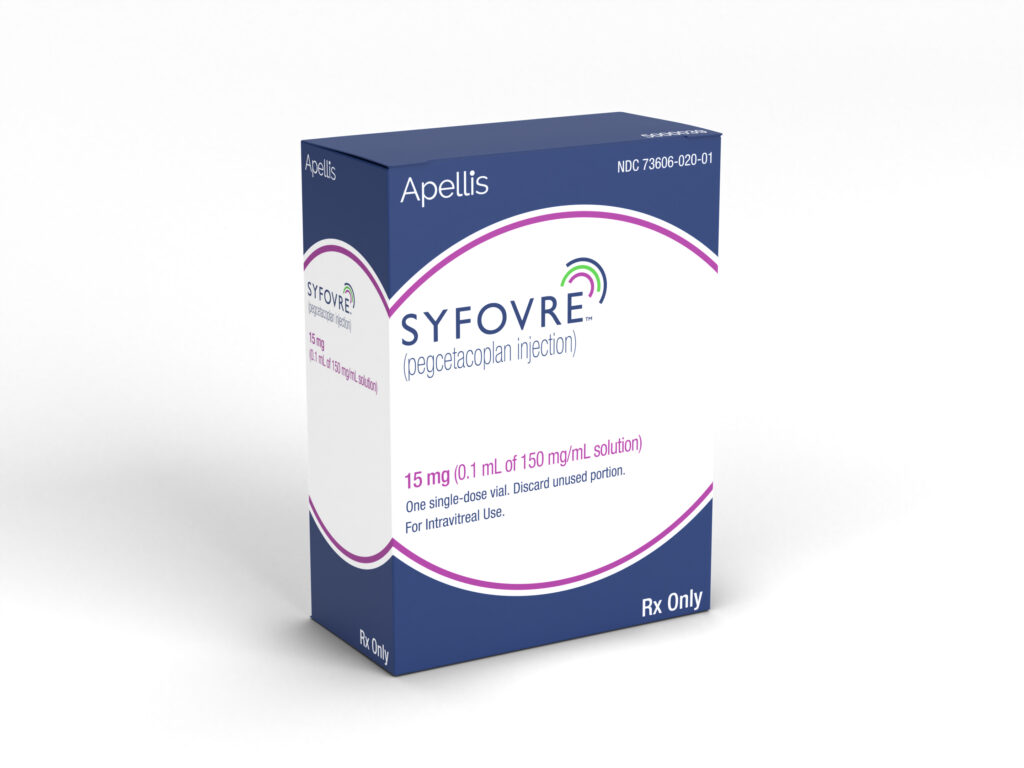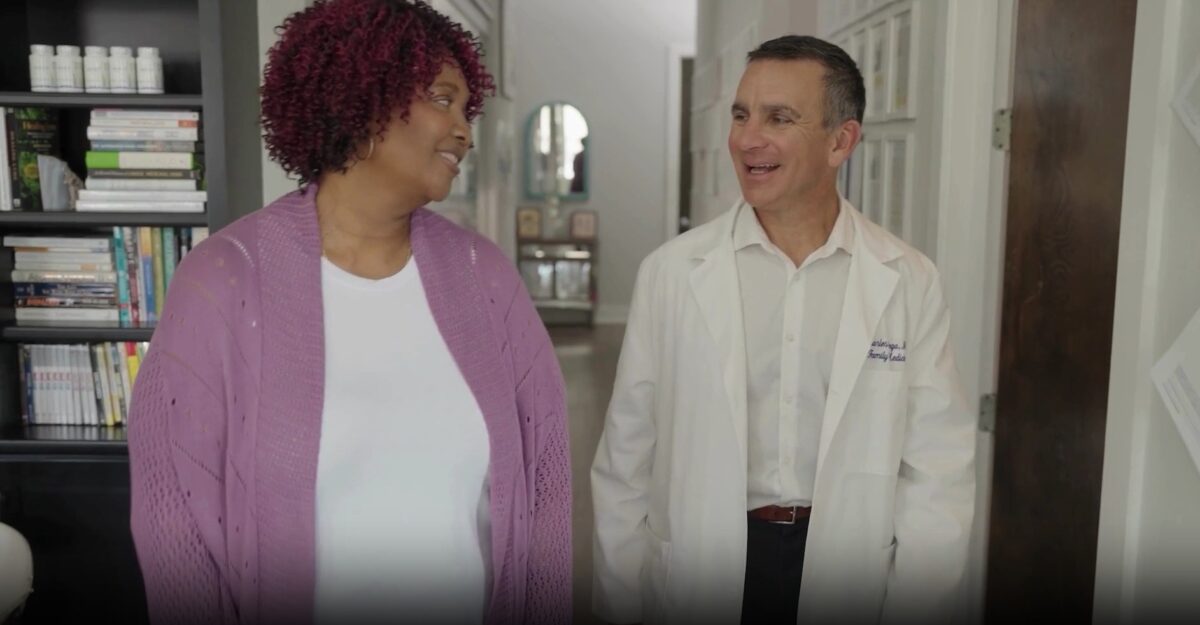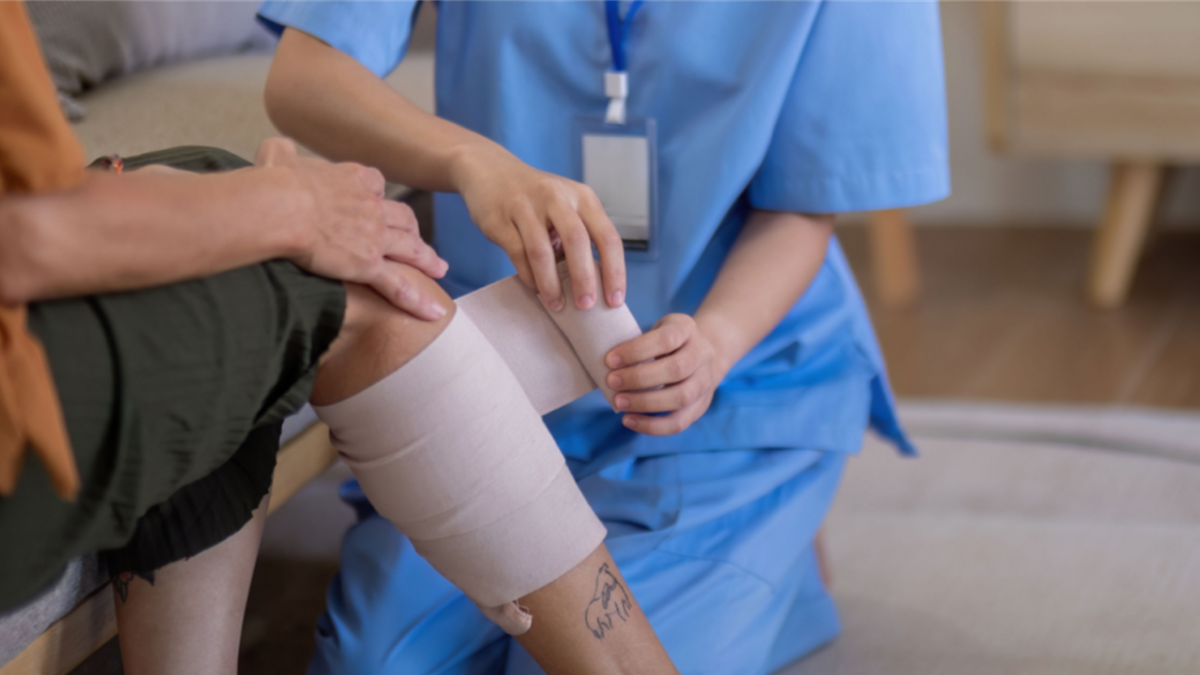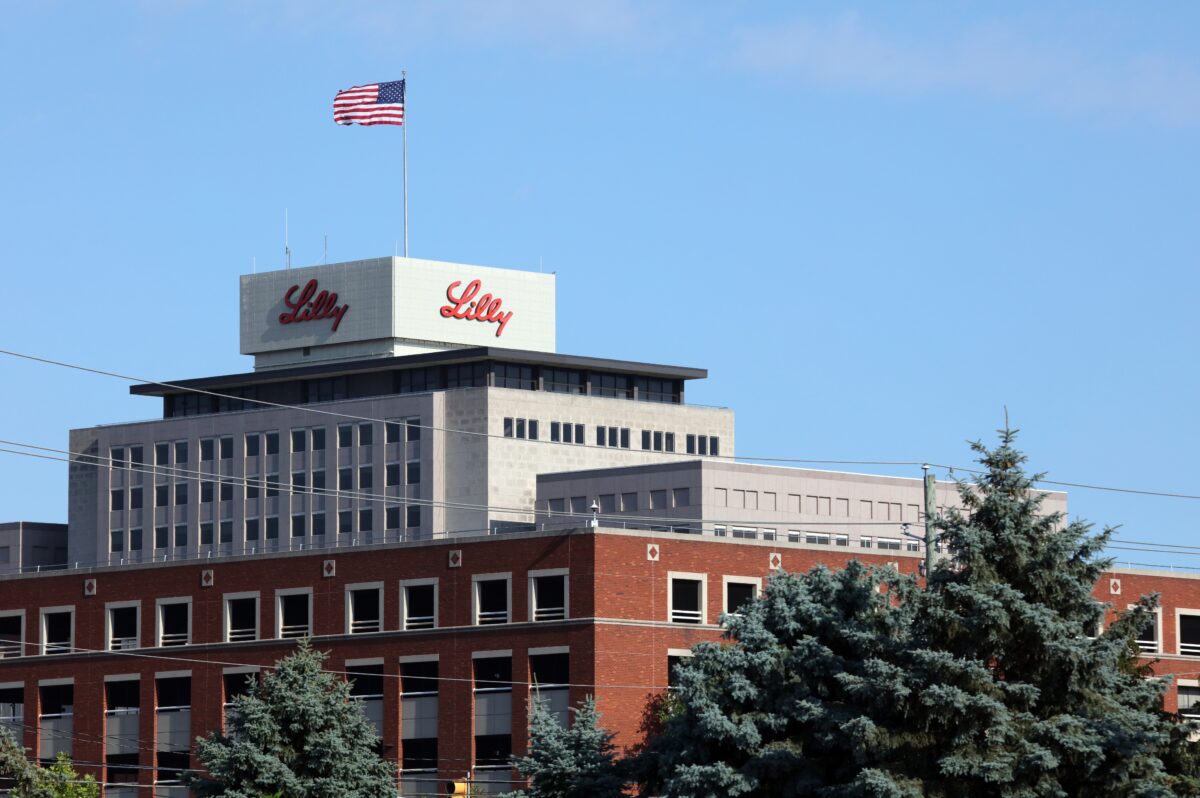The US Food and Drug Administration (FDA) recently granted approval to Apellis Pharmaceuticals’ Syfovre (pegcetacoplan injection) for the treatment of geographic atrophy, a leading cause of blindness.
What is Geographic Atrophy?
Geographic is an advanced form of dry age-related macular degeneration (AMD). The progressive, irreversible disease is characterized by the growth of lesions that destroy retinal cells leading to loss of vision. Under a microscope, the patchy lesions look like small geographic maps that get larger over time to create blind spots, hence the name of the condition.
Syfovre is an eye injection designed to slow the progression of the disease that is administered once every 25 to 60 days. With the FDA approval, it’s become the first and only treatment for the debilitating condition.
The vision loss caused by geographic atrophy has a severely negative impact on quality of life. Apellis says on average, it takes only 2.5 years for geographic atrophy lesions to start impacting the fovea, which is responsible for central vision.
While there are several effective treatments for the “wet” form of advanced AMD, there are none available for geographic atrophy.
According to Apellis, it is estimated that geographic atrophy affects at least 1 million people in the US.
Related: Regeneron’s Eylea Nabs First Pediatric Approval for Eye Disease in Preterm Infants
“Think of having a forest fire in your retina, where your retina slowly but certainly dies completely,” explained Dr. Cedric Francois, Apellis co-founder and CEO, in an interview just ahead of Syfovre’s approval.

Apellis notes that Syfovre is not a cure. The drug’s approval was based on its ability to slow the growth of geographic atrophy lesions, a marker of the disease, without any impact on slowing disease progression or the progression of central vision loss.
Acknowledging this, Dr. Francois said, “This is not a drug that flips the switch on day one.”
“It’s a drug where you make an investment over many years, and where the longer you stick to the therapy, the better this drug is going to work for you,” he added.
He sees this as one of the drug’s strengths where the longer you treat, the better it works.
Pegcetacoplan Trial Results
Syfovre is a C3 therapy designed to regulate the over-activation of the complement cascade, which is an important part of the immune system. In geographic atrophy, excessive complement activation causes the destruction of retinal cells through irreversible lesion growth.
C3 has been found to be the only target that can modulate the complement cascade because of its central location in the cascade.
Syfovre’s approval was based on positive results from Apellis’ Phase III DERBY and OAKS studies at 24 months, which were shared in August 2022. They found that the drug decreased the growth rate of geographic atrophy lesions compared with placebo with greater effectiveness seen over time.
“This is the beginning of a new era” for geographic atrophy, said Dr. Eleonora Lad, lead investigator on the OAKS study and associate professor of ophthalmology, director of ophthalmology clinical research unit at Duke University Medical Center, in a from Apellis announcing the Syfovre approval.
In one of the studies, a 12 percent relative reduction in lesion growth compared to sham/placebo injections was seen after the administration of monthly injections for a year, which wasn’t statistically significant. After two years, this relative reduction increased to 19 percent. Additionally, dosing every other month appeared to work better over time, with a 11 percent relative difference in lesion growth after one year to 16 percent after two in that same trial.
“I am thrilled to see the increased effects over time, which suggest that pegcetacoplan is preserving more and more photoreceptor cells that are directly responsible for vision,” said Lad. “The vision loss caused by geographic atrophy is devastating for patients, taking away their ability to perform critical daily tasks like driving, reading, and recognizing faces. It is very exciting to finally be on the brink of the first potential geographic atrophy treatment with pegcetacoplan.”
Apellis noted that the greatest benefit — up to 36 percent reduction in lesion growth with monthly treatment — was seen between months 18 and 24.
Clinically Meaningful Benefit: The Missing Piece?
Apellis hasn’t been able to show that slowing the growth of lesions leads to improvements in vision. In its late-stage trials, Apellis reported that patients did not experience any visual acuity benefit after two years of treatment. The studies also did not reveal any meaningful differences on secondary study goals evaluating vision, such as an individual’s reading speed, noted Apellis.
Lad says these benefits could occur in the future when the effects on lesion growth become more enhanced. “You get more and more prevention of loss over time,” said Lad. “To me it’s pretty clear that this is working.”
Others are not so sure.
“In my opinion, this drug is all pain and no gain,” said Demetrios Vavvas, an ophthalmology professor at Harvard Medical School and the director of the Retina Service at Massachusetts Eye and Ear, in an before the FDA’s decision.
“We shouldn’t base our decisions on emotions, or [an idea that] ‘we have to do something because we have nothing else.’ That ‘something’ may be worse than nothing,” he added.
Moreover, treatment with Syfovre was associated with a small, but increased risk of infections, intraocular inflammation and neovascular (wet) AMD (formation of new blood vessels). These can cause increase vision loss and may necessitate additional therapy. These risks appear to increase with time, which is a concern some retinal specialists have. The FDA has included the risk of these side effects on the drug’s label.
In a company presentation, Apellis revealed the list price of Syfovre to be $2,190 per vial before discounts and said it would be made available through specialty distributors and pharmacies across the US. The company expects to launch the drug this month.
Pegcetacoplan, sold under the name for Empaveli, was approved for its first indication in 2022 for the treatment of the rare blood disease paroxysmal nocturnal hemoglobinuria. The drug generated an estimated $65 million in net sales in 2022.
Wall Street analysts predict Syfovre could reach $3 billion in peak yearly sales.
Other Controversial FDA Approvals
While targeted treatments against a disease marker may achieve the intended effect of blocking or reducing its levels, this may not necessarily translate to a clinical benefit, an issue seen with some recent drug approvals.
The FDA’s approval of Biogen’s Alzheimer’s drug Aduhelm (aducanumab) was met with some fierce skepticism as initial trial data failed to show its impact on clinical decline despite its ability to reduce amyloid beta plaque levels in the brain, the accumulation of which is a hallmark of the disease.
Leqembi (lecanemab), another one of Biogen’s Alzheimer’s offerings approved early this year, has been met with similar criticism. Moreover, both drugs are indicated for patients with mild cognitive decline or who are in the early stages of Alzheimer’s — the benefit of the drugs is unclear for patients with later stage or severe disease. Like Syfovre, experts say it’s plausible that the clinical benefit of these Alzheimer’s drugs could be seen over longer periods of time.












Join or login to leave a comment
JOIN LOGIN